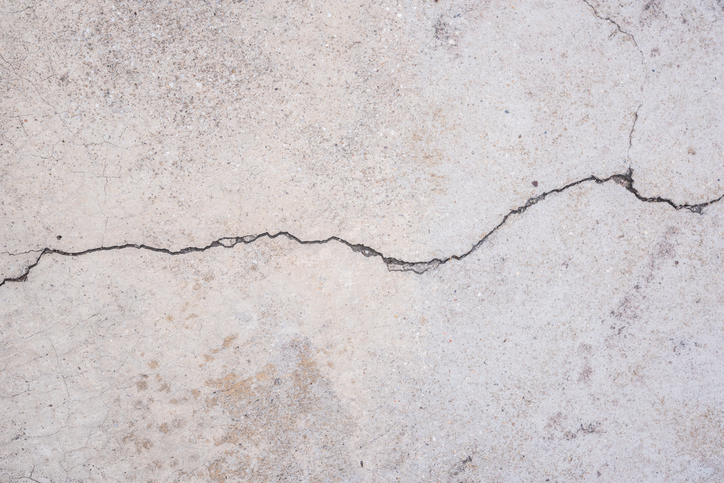Description: Cracks of any width or length that run left to right.
Implication: Your foundation wall is at risk of failure. Most likely, the wall will need to be stabilized with helical piles to help prevent future cracking.
Cracks in concrete floors or walls can range from harmless, due to natural settling, to indicators of significant foundation issues. Narrow cracks may allow water, termites, and pests into your home, while cracks over 1/16 inch often suggest structural damage.
Helitech Waterproofing & Foundation Repair offers free consultations to assess your foundation crack concerns, identifying whether a quick epoxy injection or a more extensive foundation repair is needed. With financing options available, Helitech ensures you receive the right solution for lasting foundation stability, giving you the peace of mind you deserve.

Not all foundation cracks are harmless—while some are benign, others signal serious structural issues that can jeopardize your home’s integrity. That’s why it’s essential to keep an eye on any wall cracks you spot—even small hairline cracks—to detect any changes, like L-shaped cracks growing into a stair-step pattern.
There are two types of cracks in concrete—dormant and active:
Dormant cracks that stay the same over time are typically harmless, while active cracks indicate foundation movement that may require attention. The crack’s shape often reveals its cause: stair-step cracks may signal uneven settling, which might require foundation stabilization using braces or helical piles, while minor vertical cracks from concrete curing can usually be treated with epoxy injections.
Dormant cracks remain stable, showing no significant changes in depth, size, or direction over time, making them less concerning, though they should still be monitored. Active cracks, however, indicate foundation movement and tend to grow in size or shift direction, which can be dangerous. Large stair-step or horizontal cracks doubling in size are serious warning signs.
Helitech offers free consultations to inspect any active foundation cracks, determine the root cause, and recommend repairs tailored to the severity of the damage. Don’t wait to fix your foundation! Call us today and let us heal your home.
Description: Cracks of any width or length that run left to right.
Implication: Your foundation wall is at risk of failure. Most likely, the wall will need to be stabilized with helical piles to help prevent future cracking.
Description: Cracks of any width or length that run top to bottom.
Implication: Minor vertical cracks can be sealed with an epoxy injection for quick repair, while more severe vertical cracks require robust structural solutions to ensure lasting stability.
Description: Cracks in a wall with a stair-stepped pattern.
Implication: A shift in your foundation’s footing can lead to cracks, and the type of repair will depend on the crack’s severity.
Description: A web of small cracks in the concrete.
Implication: These are usually surface-level cracks, mostly cosmetic, but they should be checked for any growth or changes over time.
Description: Narrow, but deep, cracks
Implication: Due to the depth of hairline cracks, water damage is a concern.
Description: Deep surface cracks which follow the direction of the reinforcement bars (rebar)
Implication: Spalling cracks are usually caused by rebar corrosion due to the presence of excess water.